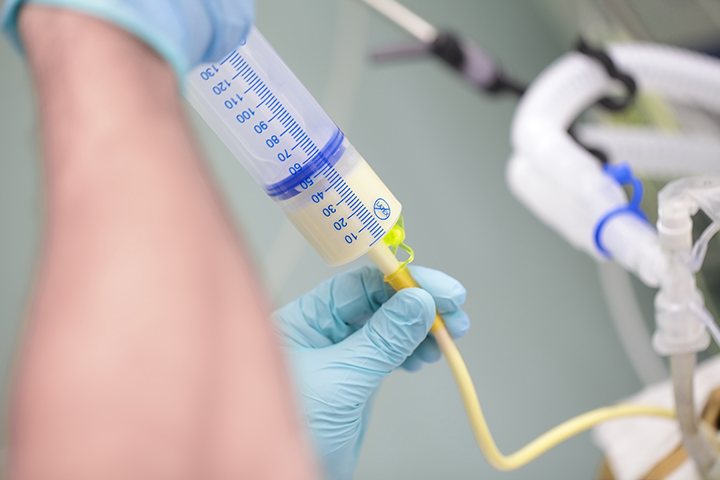Concept of Nasogastric Tube Feeding – This book covers the entire syllabus of “Nutrition and Dietetics” prescribed by BNMC for all Diploma in Nursing Science and Midwifery students. We tried to accommodate the latest information and topics. This book is an examination-friendly setup according to the teachers’ lectures and examination questions.
At the end of the book previous university questions are given. We hope in touch with the book students’ knowledge will be upgraded and flourish. The unique way of presentation may make your reading of the book a pleasurable experience.

Concept of Nasogastric Tube Feeding
Nasogastric Tube Feeding:
Administration of feed directly into the stomach through a tube (NG tube) passed into the stomach through the nose (nasogastric) or mouth.
Or,
A gastric gavages or nasogastric feeding is the instillation of nourishing fluid into the stomach through a nasogastric tube.
Purposes of Nasogastric Tube Feeding:
- To provide adequate nourishment to patient who cannot feed themselves.
- To provide fluid.
- To administer medication.
- To provide nourishment to patient who cannot feed through mouth.
Indication of NG Tube Feeding:
- Comatose patient.
- After operation over mouth, pharynx, or larynx.
- For premature or weak infants who are unable to suck.
- In case of insanity when patient always refuses to take food.
- People with high nutrients requirement.
- People with no appetite for an extended time.
- The patient who feel difficulty in swallowing.
- Increased metabolic needs, e.g.: Burn, cancer.
- Poor oral intake.
- Head and neck injury.

Contraindication of NG Tube Feeding:
The nasogastric feeding route is not suitable for all patients, including those with:
- High risk of aspiration
- Gastric stasis
- Gastro-oesophageal reflux
- Upper gastrointestinal stricture
- Nasal injuries
- Base of skull fractures
Common Tube Feeding Problem:
- Diarrhoea
- Nausea and vomiting
- Aspiration
- Constipation
- Elevated blood sugar
- Weight loss
- Elevated electrolytes
- Dry oral and nasal mucus membranes
- Middle ear inflammation
- Plugged feeding tube
Procedure of Administering Tube Feeding:
A. Equipment
- Gloves Feeding pump (if ordered)
- Clamp (optional)
- Feeding solution
- Large catheter tip syringe (30 mL or larger)
- Feeding bag with tubing
- Water
- Measuring cup
- Other optional equipment (disposable pad, pH indicator strips, water-soluble lubricant, paper towels)
B. Procedure
- This is a clean procedure, requiring a hygienic hand wash, apron and gloves.
- The position of the feeding tube should be confirmed immediately prior to administering an enteral feed.
- Do not heat enteral feeds prior to administration.
- Wipe the top of the feeding bottle with an alcohol impregnated wipe.
- Do not touch the key parts, such as the inner part of the spike set.
- Flush the feeding tube with 3-5ml water after confirming correct position and following administration of the feed.
- Never top-up enteral feeds into the reservoir of feeding systems.
- Never decant feeds from bottles into bed sets on the ward.

Read more:
